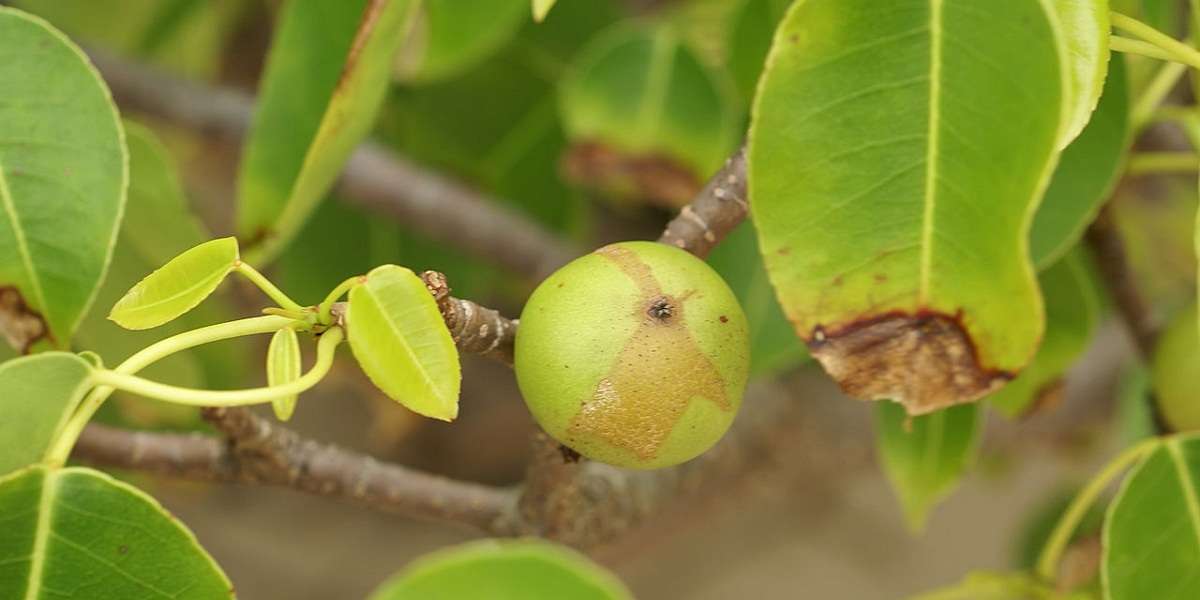In A Nutshell
The manchineel tree is one of the deadliest plants in the world. Even coming into contact with the bark or leaves will leave a person suffering from severe burns, and eating any of its sweet-smelling fruits is a potentially lethal choice. The tree has long been used for supplying sap for poison darts, and as a place to tie—and torture—Spanish conquistadors.
The Whole Bushel
The manchineel tree is named after the Spanish word for “little apple,” which is manzanilla. That’s appropriate enough, as the tree sports green fruits that look like small apples. But it had another, even more appropriate name—the Spanish call it the arbol de la muerta, or “tree of death.” The tree’s genus, Hippomane, was assigned to its line after noting that horses were driven mad after eating it.
It looks unassuming enough, often little more than a shrubby bush, but sometimes growing into a tree that’s around 15 meters (50 ft) tall. It’s found mainly in the Southeastern United States, the Caribbean, and Central America. Its bark is gray-brown, and its leaves are a bright and shiny green. The fruits of the tree are sweet-smelling and attractive.
Every part of the tree is poisonous, and just coming in contact with the tree can be potentially lethal. The leaves and bark contain a poison that will irritate the skin and cause severe blisters. The milk-white sap that leaks from wounds in the tree will also cause severe blistering. If sap touches a person’s mucous membranes, it can cause severe burns.
The fruit makes the tree even more deadly. The fruits look like small green apples, only an inch or two in diameter. The fruits are very sweet-smelling, and those who are brave—or foolhardy—enough to eat them say that they even taste good. But eating just a small amount will leave blisters and burns on your mouth and throat. In addition, the raw, soft tissues of your digestive tract will begin to swell and blister after eating just the smallest bite of the fruit. Larger amounts are deadly.
As if that isn’t enough, the tree can also cause serious damage if you so much as stand under it. If it’s raining, water falling off the leaves will carry toxins and burn the skin of anyone it touches. In fact, there are accounts of 16th-century Florida natives pressing invading Spanish conquistadors to stand beneath the trees during the rain to burn and even blind them.
Many indigenous peoples have used the poisonous, deadly tree to their advantage. The sap of the manchineel tree was often used for poisoning arrows and darts, which in turn were used to control captives. Tying people to the tree and leaving them with any exposed skin would result in excruciating pain and burns.
Removing the tree from populated areas proves problematic. Cutting the tree releases the squirting, spraying sap, and burning the tree turns the toxins into a vaporous form that’s carried in the smoke. Even contact with the smoke can leave burns on the skin and can sometimes result in blindness.
Strangely, the wood of the tree has been highly prized in the making of colonial furniture. Once the wood has been left to dry in the sun, its poisonous qualities largely disappear. Drying the fruits has a similar effect, and these dried fruits have been known to be used as a diuretic. In Jamaica, manchineel tree gum has been long used to treat various venereal diseases. There’s also an iguana native to Central America that is completely immune to the poisonous qualities of the tree, and often lives among its branches.
Show Me The Proof
University of Florida: Hippomane mancinella, Manchineel
US FDA Poisonous Plant Database: Botanical Hazards
Manchineel tree advisory (pdf)
Featured image credit: Hans Hillewaert












